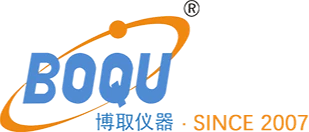Expert in Water Quality Measurement and Water Treatment Project Since 2007
The Different Methods of Sampling Water for Online Conductivity Analysis
Water sampling is a crucial part of monitoring the quality of water used in various industries and processes. Conductivity is one of the key parameters used in evaluating water quality, especially for industrial processes. Conductivity refers to the ability of water to conduct electrical current, and it is affected by factors such as temperature, dissolved solids, and ions present in the water. Conductivity measurements provide insights into water purity and suitability for specific applications. With advancements in technology, online instrumentation conducts real-time conductivity measurements to detect any changes and maintain water quality levels. This article looks at different methods of sampling water for online conductivity analysis.
Method 1: Grab Sampling
Grab sampling, also known as spot sampling, involves collecting water samples for analysis at a specific location and at a particular time. It is the most common method used for sampling water for conductivity analysis in many different industries. The sample is taken from the water source and is then analyzed by a portable conductivity meter or analyzed in a laboratory for various water quality parameters, including conductivity. Grab sampling is ideal for small-scale analysis or when online instrumentation is not available. However, it has limitations in real-time monitoring and detection of sudden changes in conductivity levels.
Method 2: Composite Sampling
Composite sampling involves taking multiple samples over time to create an average reading of the conductivity. The technique is helpful in minimizing fluctuations in readings caused by the temporal variability of conductivity levels in the water source. The samples are collected manually or automatically using an online sampling system and then combine them to create a single composite sample. The composite sample is analyzed for conductivity, and the result reflects the average conductivity readings over the sampling period.
Method 3: Flow-Weighted Sampling
Flow-weighted sampling involves collecting a water sample that is proportional to the volume of water that passes through a specific location. The sampling is conducted using an automated sampler that collects water samples at predetermined intervals based on the flow rate. Flow-weighted sampling ensures that the collected water sample is representative of the water quality in a particular location. The water sample collected is analyzed for conductivity or other water quality parameters.
Method 4: Virtual Sampling
Virtual sampling involves using computational methods to assess the conductivity levels of water in real-time without physically collecting water samples. The technology uses mathematical models to estimate conductivity values based on data such as flow rate, temperature, and pH. The technique is ideal for monitoring large water sources like rivers or reservoirs.
Method 5: Online Monitoring
Online monitoring involves the installation of online instrumentation to measure conductivity in real-time. The electrical conductivity sensor measures the electrical conductivity of the water at various points and sends the data to a data logger or cloud-based system for analysis and interpretation. The online monitoring system sends alerts when conductivity levels exceed predetermined limits, allowing for immediate action and control measures to mitigate any adverse effects.
In conclusion, measuring the conductivity of water is critical in assessing water quality for various industrial applications. The sampling method chosen should consider the size and location of the water source, analysis requirements, and budget. Grab sampling is the most commonly used method but has limitations in real-time monitoring. Composite sampling is an excellent method for minimizing fluctuations in readings, while flow-weighted sampling is ideal for providing representative water quality samples. Virtual sampling uses mathematical models to assess conductivity levels, while online monitoring provides real-time monitoring and alerts for immediate action. The choice of a sampling method depends on the specific requirements of the application.
Contact Us
Office Add:No. 118 Xiuyan Road,Pudong New Area,Shanghai,Zip Code:201315,China
Contact us right away
BOQU Instrument focus on development and production of water quality analyzers and sensors, including water quality meter, dissolved oxygen meter, pH sensors, etc.
